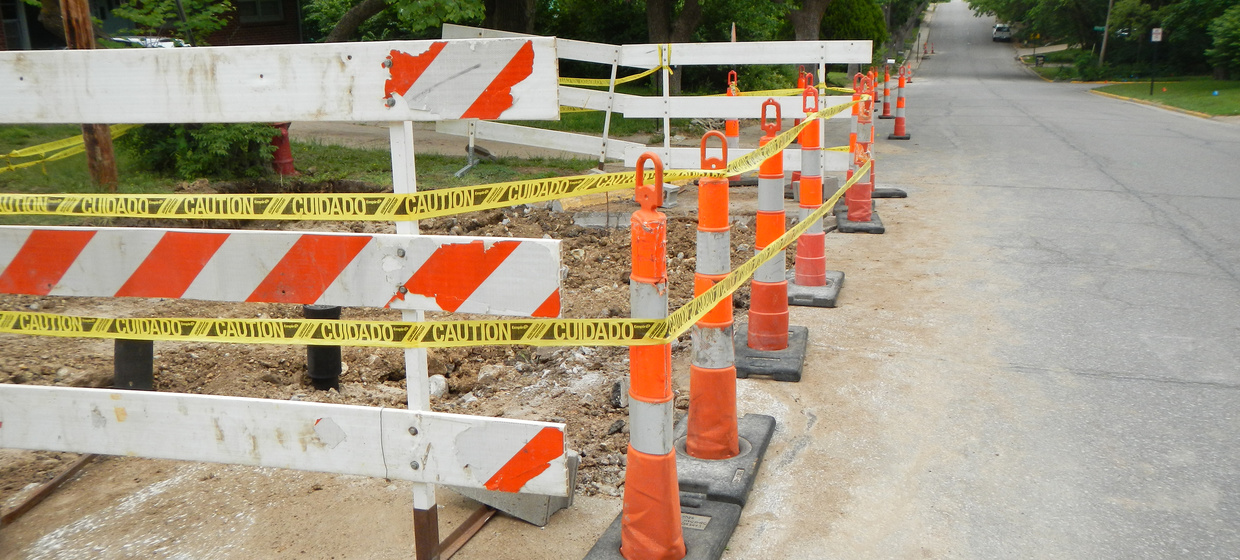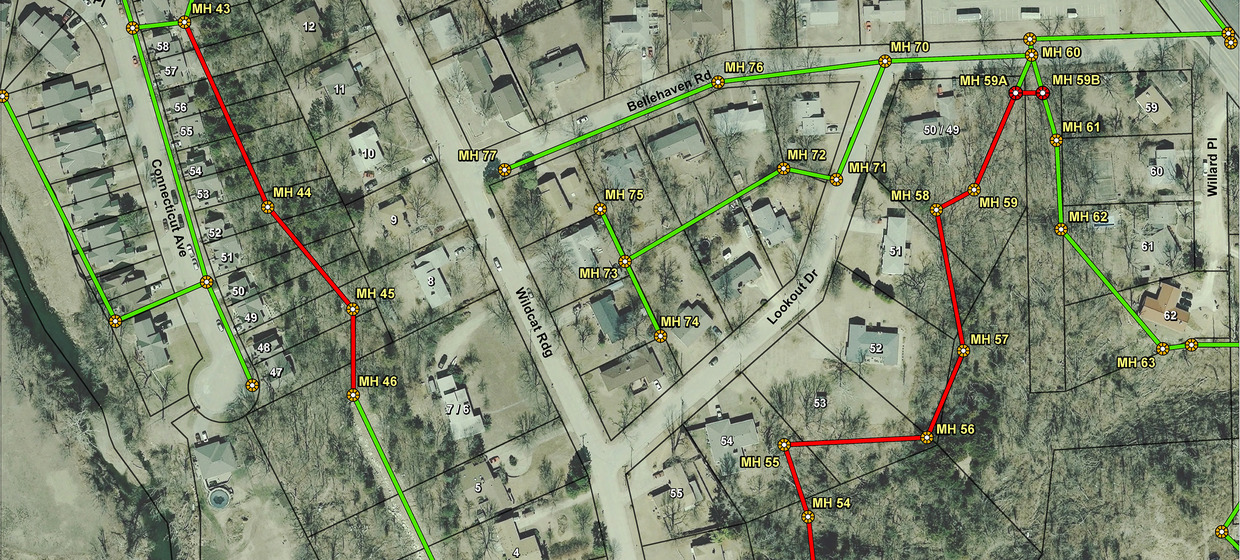Water and Sanitary Sewer System Improvements - Manhattan
Manhattan, KS
The City of Manhattan selected BG Consultants to design water and wastewater system improvements, necessitated by structural deterioration and aging, capacity issues, and economic development. The designs included 12 different sites.
The 2012 water system improvements were initiated by flow and pressure problems in several areas of Manhattan. This portion of the project included some traditional waterline replacement (approximately 1,600 feet) and improved interconnectivity in the College Heights and McCollum Street area. A new Stonecrest pressure reducing valve (PRV) assembly now provides an integral connection between high and low pressure zones, while a new bypass at the Miller Parkway PRV allows for more flexibility in operations. A new Tuttle Creek and Kimball PRV replaced aging infrastructure and solved confined space entry issues. In addition, modifications to two water storage facility valve vaults at the Sunset Zoo Tower and Sunset Cemetery Tower replaced aged valves and improved operational flexibility.
The 2013 improvements focused on two waterline areas—Westwood and Pottawatomie. The Westwood replacements required 5,000 feet of new 8- and 12-inch DIP waterlines with 120 feet of bore underneath Fort Riley Boulevard and 24-inch steel casing. This project greatly enhanced pressures in Westwood and improved service to the Stagg Hill area. The Pottawatomie replacements included approximately 2,000 linear feet of new eight- and 12-inch DIP waterlines with 120 feet of bore beneath the Union Pacific Railroad. The existing 2-4 inch cast iron mains were undersized for this industrial area, particular in regards to fire flow. The project was expected to increase fire flows above 3,000 gpm at 20 psi.
The 2013 portion of the project also included two areas of wastewater system improvements. The Old Claflin improvements required the replacement of 415 feet of eight-inch sanitary sewer lines and three manholes. The Wildcat Ridge area required the replacement of approximately 2,600 feet of sanitary sewer and 19 manholes. Both areas of the project solved the problem of excessive maintenance due to aging infrastructure.



